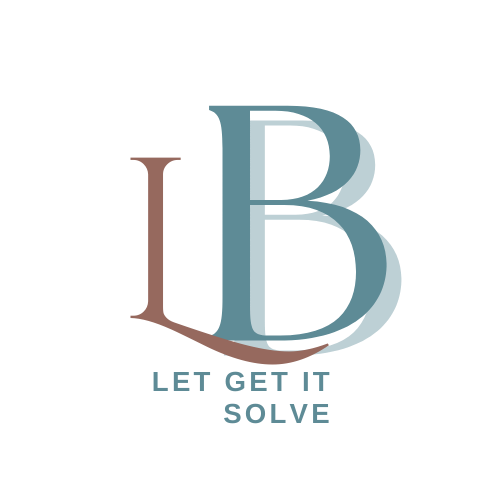Orofacial Disorder is a type of Myofunctional disorder, which affects the muscles. These disorders are muscle disorders of the face, mouth, lips, or jaw as a result of chronic mouth breathing.
And recent studies on this disorder are not available. Nonetheless, according to previous research, it was proved that 38% of numerous populations gave OMD. This disorder is more in children with speech/articulation problems (Kellum, 1992).
And the speech/articulation problem is related to Open Mouth Posture, which is the focus of this guide.
Open mouth posture is a type of myofunctional disorder, which affects the head and neck posture. Indeed, people affected with open mouth postures suffer from their head being in a forward position, but tilted posteriorly, to increase airway space.
Research has shown that a person with an open-mouth posture can end up with an increased length of the face, retruded chin, short upper lips, a flat nasal area, and droopy eyes.
Speech/articulation problems can be related to open-mouth posture. When a person habitually keeps their mouth open, it can affect the positioning of the tongue and lips, which are essential for speech production.
This can lead to difficulties with the articulation of certain sounds and words. Additionally, an open-mouth posture can lead to reduced muscle tone in the mouth and jaw, which can further add to speech difficulties.
Most people dont know that open-mouth posture can have serious and permanent effects on their orofacial development, and dental development.
So in this post, we will address everything you need to know about open mouth posture, its symptoms, and how to treat it.
Make sure to pay attention to details in the post, so as not to miss out on important information concerning open-mouth posture in this guide.
Orofacial Myofunction Disorder: Description
Orofacial Myofunction Therapy (OMT) is a type of therapy that focuses on correcting the function and coordination of the muscles of the mouth and face. It is typically used to address issues related to swallowing, speech, and breathing that may be caused by improper muscle use or coordination.
During OMT, a therapist will work with a patient to improve their muscle strength, coordination, and habits related to the mouth and face. This may involve exercises to strengthen specific muscles, as well as training to correct improper muscle use during activities such as swallowing and speaking.
OMT is often used as a complementary treatment for conditions such as sleep apnea, temporomandibular joint disorder (TMJ), and speech and language disorders. It can also be beneficial for individuals with habits such as thumb-sucking or nail-biting that may be causing issues with the muscles of the mouth and face.
Open Mouth Posture: Description
Open mouth posture simply refers to a posture where the mouth is open, either partially or fully, or for an extended period.
This posture is usually related to several various physiological and psychological disorders, including dental problems, speech and language disorders, as well as psychological conditions such as stress and anxiety.
One of the most common causes of open mouth posture is a dental issue such as missing or misaligned teeth. When the mouth is open, it allows air to circulate and cool the oral cavity, which can provide relief for individuals who have a painful dental condition. This condition can also be detected in individuals who have a speech or language disorder, such as a cleft lip or palate.
Open mouth posture can also be a physical indication of psychological stress and anxiety. When people are under stress or anxious.
They tend to breathe more rapidly and shallowly, which can cause the mouth to open involuntarily. This can lead to a vicious cycle of increased stress and anxiety, which in turn leads to further open-mouth posture.
It is important to note that open-mouth posture can also be a result of poor posture or muscle imbalances. For instance, if a person has a forward head posture, their chin will jut out, causing the mouth to open unconsciously. This can also lead to tension and discomfort in the neck, shoulders, and back.
In summary, Open mouth posture is a common problem that can have a variety of causes, including dental problems, speech and language disorders, stress and anxiety, and poor posture.
What Causes Open Mouth Posture
Open mouth posture can be caused by numerous psychological and physiological factors, and some of the most common causes of open mouth posture are as follows:
Dental problems: Missing or misaligned teeth, jaw pain, and temporomandibular joint (TMJ) disorders are among the most common dental issues that can lead to open-mouth posture.
Speech and language disorders: Individuals with speech and language disorders, such as cleft lip or palate, can develop open-mouth posture as a result of the structural problems that cause these conditions.
Poor posture: Individuals who have poor posture, such as forward head posture or rounded shoulders, can also develop open mouth posture. This is because their neck and chin are positioned forward, causing the mouth to open unconsciously.
Sleep apnea: Open mouth posture is a common symptom of sleep apnea, a condition in which individuals stop breathing for brief periods during sleep. This can cause the mouth to open to increase airflow and prevent suffocation.
Ageing: As individuals age, their muscles and joints can become less flexible, causing the mouth to open more easily. This can also be exacerbated by dental problems and other underlying health conditions.
Open Mouth Posture Symptom
Below in the post are some of the most common symptoms of open mouth posture include:
Jaw pain: Individuals with open mouth posture may experience pain or discomfort in the jaw, particularly when they try to close their mouth.
Dry mouth: Open mouth posture can cause the mouth to become dry and uncomfortable, as it increases the amount of air circulating in the oral cavity. This results in dehydration and makes it difficult to speak or eat.
Sleep disturbances: Open mouth posture can be a symptom of sleep apnea, a condition in which individuals stop breathing for brief periods during sleep. This can cause sleep disturbances, snoring, and fatigue during the day.
Speech difficulties: Individuals with open mouth posture may have difficulty speaking clearly or may develop speech impediments, particularly if they have a speech or language disorder such as a cleft lip or palate.
It is important to note that open-mouth posture can also be a result of underlying medical conditions, such as neurological disorders or sleep apnea.
Treatment For Open Mouth Posture
After knowing the causes and symptoms of open mouth posture, here in the section of this post is the treatment for open mouth posture.
The treatment for open mouth posture will depend on the underlying cause. For example, if it is due to dental problems such as missing or misaligned teeth, orthodontic treatment or restorative dentistry may be required. If the cause is muscular physical therapy or exercises to strengthen the muscles of the jaw and face may be recommended.
In some cases, a dental splint or orthotic appliance may be used to help improve oral rest posture by repositioning the jaw and tongue. This can help to relieve strain on the muscles and improve overall posture.
If the open mouth posture is due to a neurological condition such as cerebral palsy or Parkinson’s disease, medications and speech therapy may be prescribed. In these cases, it is important to work closely with a healthcare professional to determine the best course of treatment.
In some instances, open mouth posture may be due to a habit and may be treated with behavioral therapy, such as biofeedback or counselling The goal is to help individuals become more aware of their posture and develop new habits that promote proper oral rest posture.
Conclusion on Orofacial Myofunctional Disorder: Open Mouth Posture Treatment
In conclusion, open mouth posture can have many reasons and employs a personalized technique for treatment. It is crucial to follow the advice of a healthcare professional to discern the underlying cause and formulate a helpful treatment plan.
So make sure to carefully read through the details in the post to get familiar with important information.
Be sure to shear this guide with friends and family.
Robomin is a freelance writer and blogger who covers topics related to Account Creation, gadgets, Refunds, and how to delete An Account. He has a passion for new and innovative technology and enjoys sharing his knowledge with others

